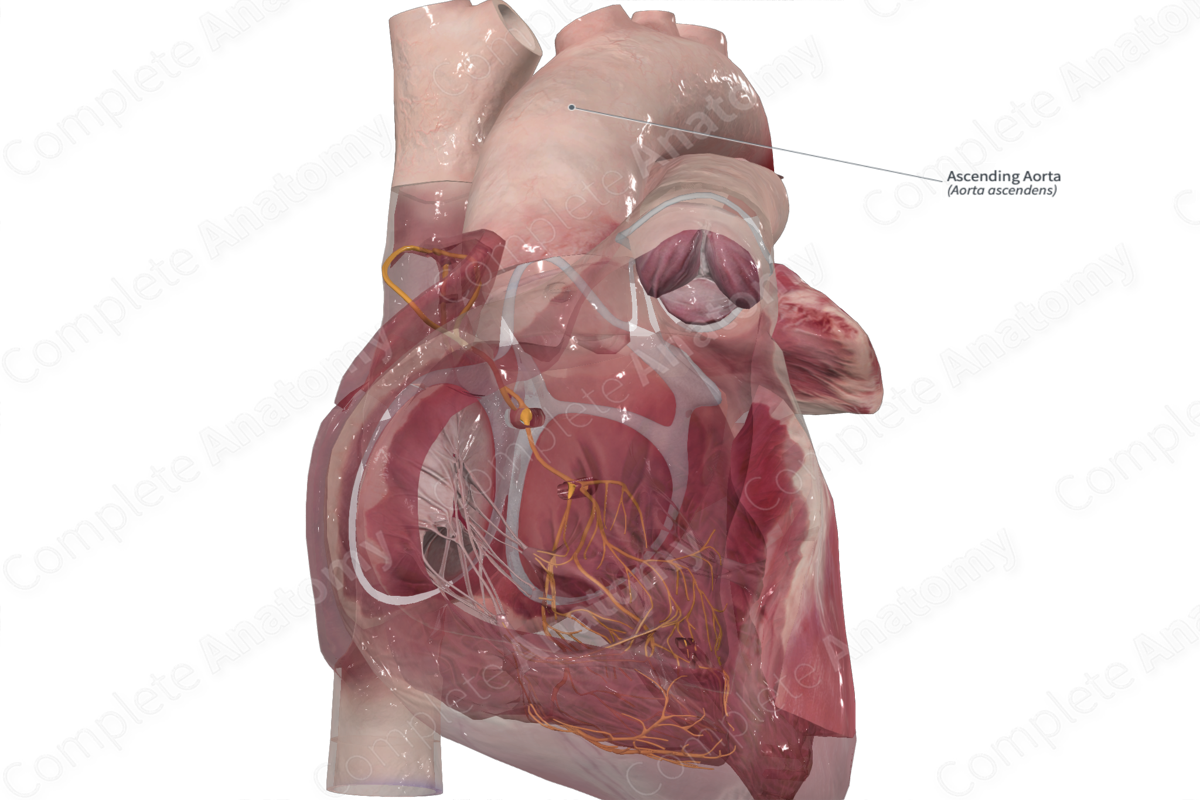
Morphology/Structure
The ascending aorta is the first part of the aorta. It’s approximately 5 cm long and begins at the base of the left ventricle. This corresponds to the lower edge of the third costal cartilage on the left-hand side. As it ascends, it travels anteriorly towards the right. It becomes the aortic arch at the transverse thoracic plane.
Related parts of the anatomy
Key Features/Anatomical Relations
At its base, the ascending aorta sits within the fibrous pericardium as it travels superiorly within the middle compartment of the inferior mediastinum. Additionally, the emerging pulmonary trunk and the right auricle sits anterior to it. The ascending aorta sits between the right atrium and superior vena cava on the right-hand side and the left atrium and the pulmonary trunk on the left-hand side.
Function
The ascending aorta is the initial component of the aorta and thus is under considerable pressure during ventricular systole; therefore, it has a thick muscular wall and a high elastin content. Near its origin, the ascending aorta gives off two branches, the right and left coronary arteries, which provide the arterial supply to the heart.
List of Clinical Correlates
- Aortic aneurysm
- Aortic dissection
- Coarctation of the aorta
Learn more about this topic from other Elsevier products





